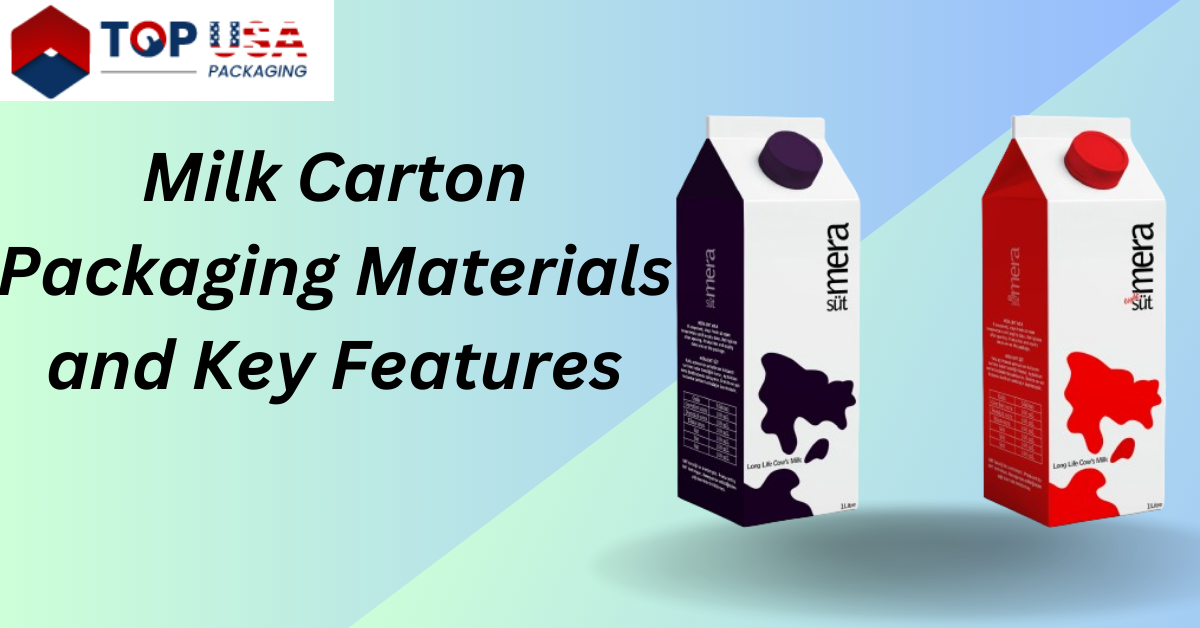Introduction
Milk cartons, a staple in grocery stores worldwide, have evolved significantly over the years. Beyond their functional purpose of containing liquid milk, they serve as a vital marketing tool and a reflection of a brand’s commitment to sustainability. This comprehensive guide explores the various materials used in milk carton packaging, their key features, and the advantages they offer to both consumers and producers.
Common Milk Carton Materials
Paperboard:
Composition:
Primarily made from wood pulp, paperboard is a durable, lightweight material.
Key Features:
Recyclability:
Paperboard is highly recyclable, making it an environmentally friendly choice.
Versatility:
It can be easily printed and shaped to create various carton designs.
Cost-Effectiveness:
Paperboard is generally more affordable compared to other packaging materials.
Limitations:
May require additional coatings or laminations for moisture resistance and barrier properties.
Polyethylene Terephthalate (PET):
Composition:
A thermoplastic polyester resin.
Key Features:
Transparency:
PET cartons offer excellent visibility, allowing consumers to see the product inside.
Barrier Properties:
Provides a strong barrier against oxygen, carbon dioxide, and moisture, ensuring product freshness.
Lightweight:
PET cartons are lightweight, reducing transportation costs and environmental impact.
Limitations:
While recyclable, PET recycling rates can vary depending on regional infrastructure.
Aluminum:
Composition:
A metallic element.
Key Features:
Barrier Properties:
Offers exceptional protection against oxygen, moisture, and light, ideal for products with long shelf lives.
Durability:
Aluminum cartons are highly durable and can withstand harsh conditions.
Recyclability:
Aluminum is one of the most recyclable materials, making it a sustainable choice.
Limitations:
Can be more expensive compared to other materials, and may require specialized recycling facilities.
Laminated Materials:
Composition:
Combine multiple layers of different materials, such as paperboard, aluminum, and polyethylene.
Key Features:
Customizability:
Laminates offer a wide range of options for customization, including print finishes, textures, and barrier properties.
Versatility:
Can be used to create cartons with various shapes, sizes, and functionalities.
Durability:
Provide excellent protection against environmental factors and product damage.
Limitations:
May be more complex to recycle, depending on the specific materials used.
Key Features of Milk Carton Packaging
Aseptic Packaging:
Process:
Milk is sterilized at high temperatures and then packaged in a sterile environment.
Benefits:
Extended Shelf Life:
Aseptic packaging allows for longer shelf life without refrigeration.
Convenience:
Consumers can store products at room temperature, eliminating the need for refrigeration.
Reduced Food Waste:
Minimizes product spoilage and waste.
Sustainability:
Recyclability:
Many milk cartons are made from recyclable materials, contributing to a circular economy.
Environmental Impact:
By using sustainable materials and reducing waste, milk cartons can have a positive impact on the environment.
Consumer Awareness:
Consumers are increasingly aware of sustainable packaging choices, and milk cartons can play a role in attracting environmentally conscious customers.
Brand Identity:
Design:
Milk carton design can be a powerful tool for building brand recognition and conveying product attributes.
Marketing:
Packaging can be used to highlight product benefits, target specific demographics, and create a memorable brand experience.
The Role of TopUSAPackaging
TopUSAPackaging plays a vital role in shaping the future of milk carton manufacturing. With its expertise in printing, manufacturing, and packaging, the company offers a wide range of solutions to meet the diverse needs of the dairy industry.
Additional Considerations
- Cost: The choice of packaging material often depends on the cost involved. Paperboard is generally more affordable, while aluminum and laminated materials may be more expensive.
- Product Requirements: The specific needs of the milk product, such as shelf life, storage conditions, and nutritional content, will influence the choice of packaging material.
- Regional Regulations: Packaging regulations may vary depending on the country or region. Producers must ensure compliance with local laws and standards.
Emerging Markets
The Asia-Pacific region, particularly China, India, and Southeast Asia, is witnessing a surge in demand for milk and dairy products. As the middle class expands and consumer preferences shift towards healthier and more convenient food options, the need for reliable and efficient milk carton manufacturing increases. TopUSAPackaging, with its global reach and expertise, is well-positioned to capitalize on these emerging markets by providing tailored solutions to meet the specific requirements of local dairy producers.
Moreover, the USA continent, with its growing population and increasing urbanization, presents significant opportunities for milk carton manufacturing. As economies develop and disposable incomes rise, there is a growing demand for packaged dairy products, including milk. TopUSAPackaging can play a pivotal role in supporting the growth of the USA dairy industry by providing high-quality milk carton solutions that meet local standards and regulations.
Conclusion
Milk carton packaging has evolved to meet the demands of consumers and the challenges of sustainability. By understanding the various materials used and their key features, producers can make informed decisions about packaging choices that align with their brand values and meet the needs of their target market. As the packaging industry continues to innovate, we can expect to see even more sustainable and innovative milk carton solutions in the future. This comprehensive guide explores the various materials used in milk carton packaging, their key features, and the advantages they offer to both consumers and producers.
